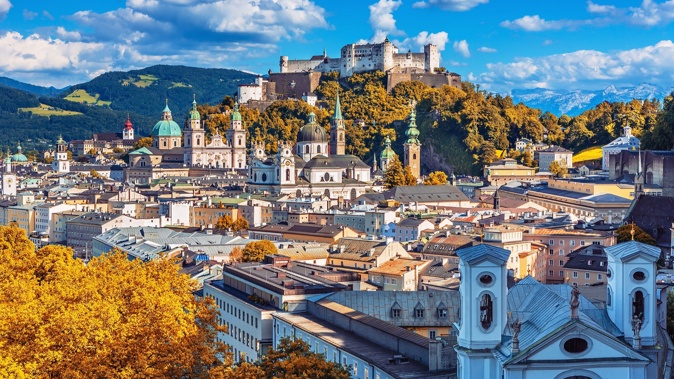
Few cities in the world enjoy the stature of being a music mecca quite like Salzburg. It’s one of my favourite European destinations and I recently ventured back to this Austrian jewel with Trafalgar, as part of their magnificent 10-day Imperial Europe tour. It’s like a tasting plate of some of Central Europe’s most glittering destinations, steeped in history and spilling with scenic finery. And it’s all spectacularly brought to life with specialist local guides who live and breathe these destinations, with unbridled passion and pride.
Salzburg is a star specimen, the splendidly preserved hometown of one of history's most beloved composers, Wolfgang Amadeus Mozart - stamping Salzburg on the tourist map for as long as there's been one. More recently, it's been a pilgrimage site for Sound of Music fans, with most of the film's iconic scenes shot in and near the city. But with its treasure-chest old town, splendid gardens, Baroque churches, and one of Europe's largest intact medieval fortresses, all surrounded by alpine wonder, Salzburg feels made for tourism. Hohensalzburg Fortress, which towers 400 feet above the city’s baroque domes and spires, was built to look so foreboding, nobody attacked the town for a thousand years.
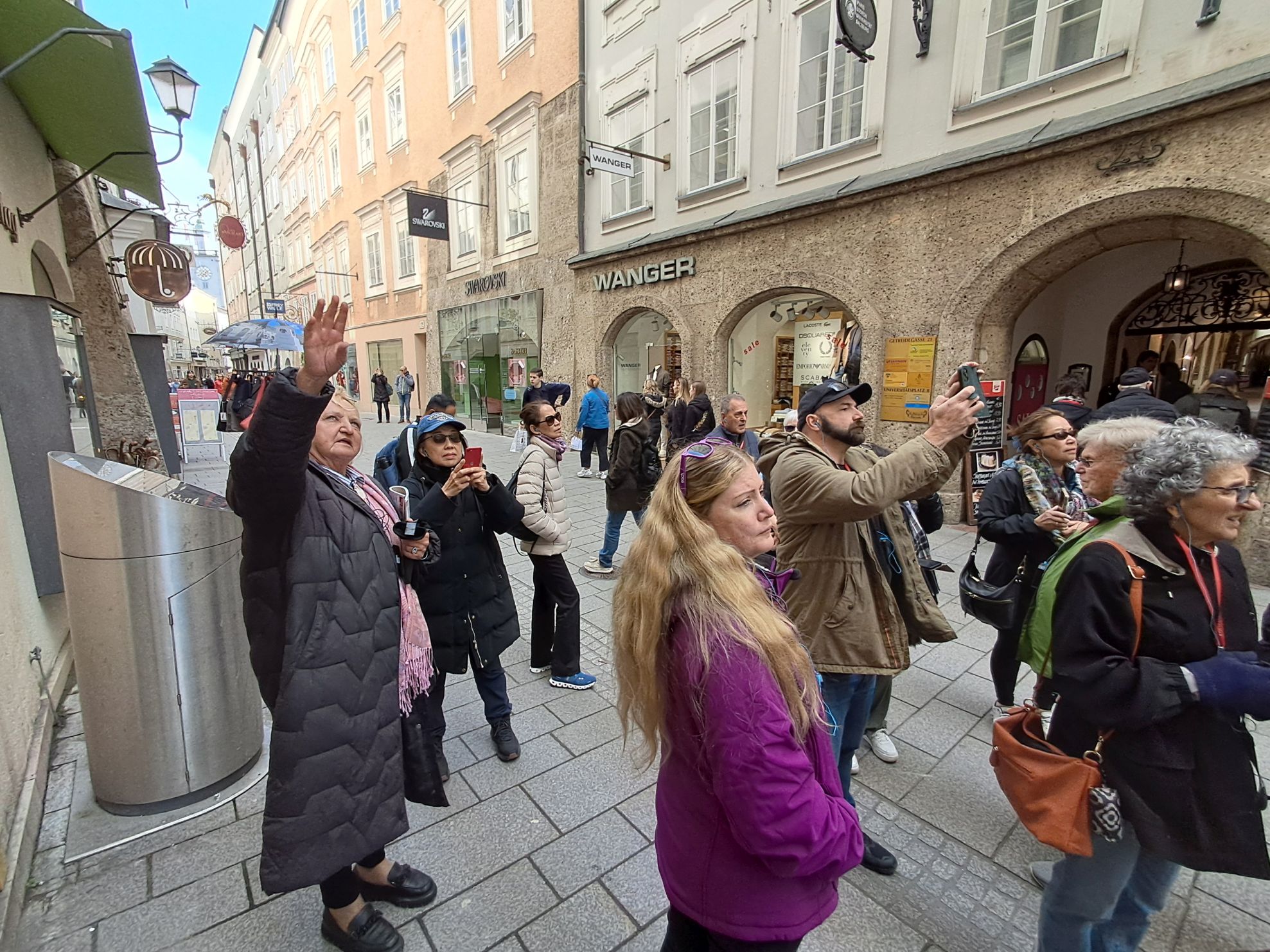 Anna and the Trafalgar group in Salzburg. Photo / Mike Yardley
Anna and the Trafalgar group in Salzburg. Photo / Mike Yardley
Even without Mozart and the Von Trapps, Salzburg’s blinding beauty and quirky back-story would have no trouble attracting tourist hordes. The city feels like a little world unto itself – partly due to its distinctive geography, with an Old Town that’s wedged between a river on one side and sheer mountain cliffs on the other. As our local specialist guide Anna remarked, Salzburg was also an independent city-state until little more than 200 years ago. 1300 years ago, Salzburg was given to Bishop Rupert by Bavaria with a clear mission to Christianise the area.
Its prosperity was powered by the nearby salt mines, and this city-state of ruling prince-archbishops steadily built fanciful palaces and elegant squares. (Many housed illegitimate children, fathered by these decadent rulers, noted Anna.) Italian Baroque flair became the favoured architectural style, which is what still dominates the fairytale cityscape today. Napoleon put an end to Salzburg’s independence, and after his fall the city became part of Austria.
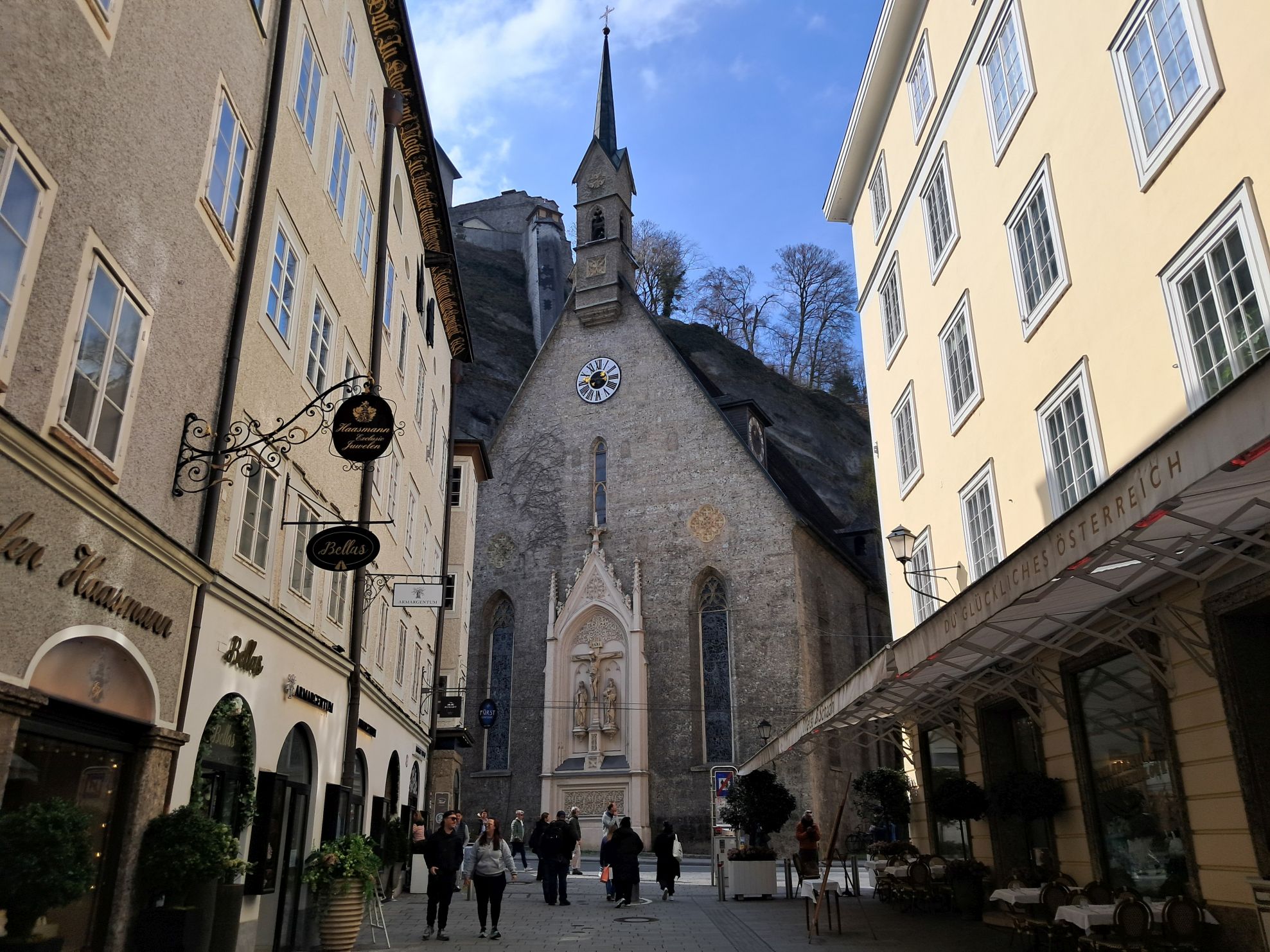 Atmospheric Old Town Salzburg. Photo / Mike Yardley
Atmospheric Old Town Salzburg. Photo / Mike Yardley
To get a sense of Salzburg's lingering grandeur we started off by prowling the twisting cobbled lanes of the Old Town, lined with harmonious pastel buildings. Make a beeline for Mozart’s birthplace (Geburtshaus), a still-intact townhouse on the main shopping street of Getreidegasse, that was his home for most of his brief 35-year life. (He died of chronic kidney disease.) It was here that Mozart learned to play piano and violin and composed his first boy-genius works. You’ll see his square piano, childhood viola, and plenty of other memorabilia. The prize piece is an old clavichord on which he supposedly composed his final work – the Requiem, which was played for his own funeral. The city still hums with his precocious energy.
Zig-zagging our way through the medieval maze led us to the grand cathedral, one of the first Baroque buildings north of the Alps. Mozart was baptised here and would later be the cathedral organist for a couple of years. Free organ concerts usually follow Sunday morning mass. Mozart concerts are held every night, at multiple venues, across the city. And be sure to get your fill of his balls. Mozart balls, or Mozartkugel, as Salzburgers say. These delicious chocolate and pistachio marzipan balls are the quintessential Salzburg souvenir, if you haven’t scoffed them all before you get home. If you’re a fan of old-school coffee houses, pop into Café Tomaselli for a caffeine fix. Mozart would regularly dine and drink almond milk here. And you can see his statue in the square now named Mozartplatz, just adjacent to the cathedral.
Our walking tour through Salzburg also included some emblematic sites immortalised in the Sound of Music. None more so than Mirabell Gardens and Palace (which also hosts Mozart concerts.) The manicured gardens are best known as the Do-Rei-Me gardens. And we walked by Nonnberg Abbey, where Maria joined the convent. Our guide Anna remarked there are still 27 Benedictine nuns in the abbey. Although it’s not open to the public, you can visit the church where the nuns will sing Gregorian chants every morning at 6:45am.
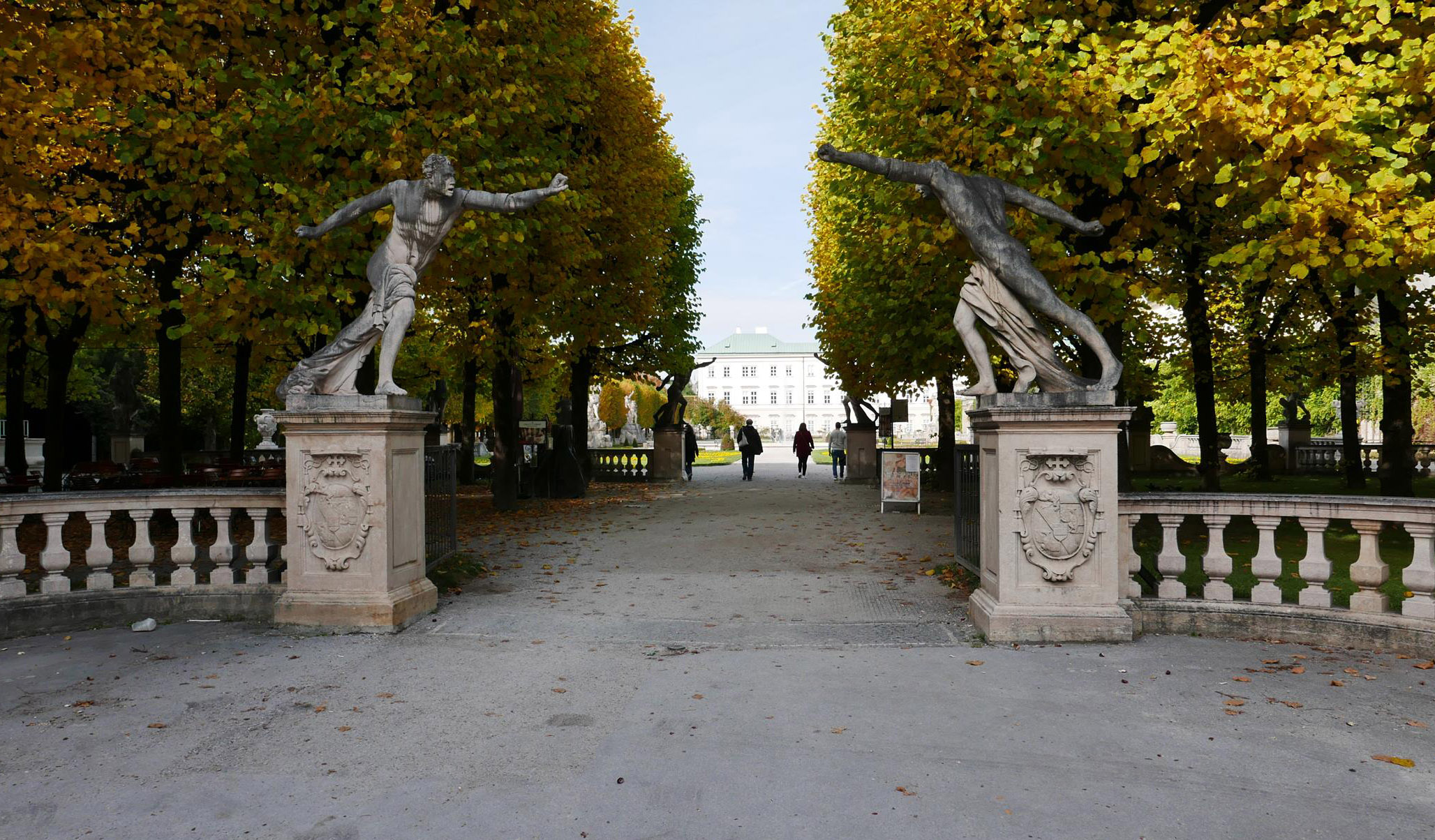 Mirabell Garden Gates. Photo / Supplied
Mirabell Garden Gates. Photo / Supplied
I also took the opportunity to revel in some of Salzburg’s signature dining destinations, at what may well be Europe's oldest restaurant. Stiftskeller St. Peter (cellar of St. Peter's Abbey), is about 1200 years old. Opened in 803AD, its ancient cave-like cloisters is the ultimate in evocative settings. Situated a stone’s throw from Salzburg Cathedral, it’s hard to go past the Weiner Schnitzel with parsley potatoes and homemade cranberry confit. Their spinach dumplings are superb, too. Sweet tooths? Definitely tuck into Salzburger Nockerl. It’s a dessert staple across the city. This sweet souffle salutes the three peaks that backdrop the city. This cranberry confit and icing sugar-topped mountain of soufflé is so big, you could almost ski-jump off it.
My visit to Salzburg with Trafalgar also included two riveting optional tours which prises up the surrounding alpine grandeur, headlined by the Bavarian Alps that its shares with Germany and the chocolate-box villages of the Lakes District. The hills in these parts will certainly come alive for Sound of Music fans, because the district holds more iconic movie locations, including the alpine meadow in the opening sequence where Julie Andrews twirled her way across, on Mount Untersberg.
The moviest of all movies is celebrating its 60th anniversary this year and it’s estimated that 40% of visitors to Salzburg are lured there by the movie ringing in their ears. How’s that for set-jetting! My Trafalgar travel director Kate remarked that despite the movie’s Oscars acclaim, it is still unfamiliar to many European audiences. When it was released in 1965, much of central and eastern Europe did not screen it because its Nazi themes were deemed “too raw, too soon” for movie audiences. Most Austrians will never have heard of the movie.
We visited the dreamy Lakes District, studded with 67 glacial lakes in all their bejewelled beauty. Highlights include St Gilgen, from which steamboats ply Lake St. Wolfgang in summer. Mozart's mother was born here. The there’s Fuschl, that’s proudly home to the management headquarters of Red Bull. But the top-billing village is Mondsee. Its gorgeous Benedictine church was where the marriage of Maria and the Baron was filmed. Kate mentioned that last summer a Saudi sheik based himself at his palatial Mondsee lakehouse, bringing with him his 23 wives. That would take some wrangling!
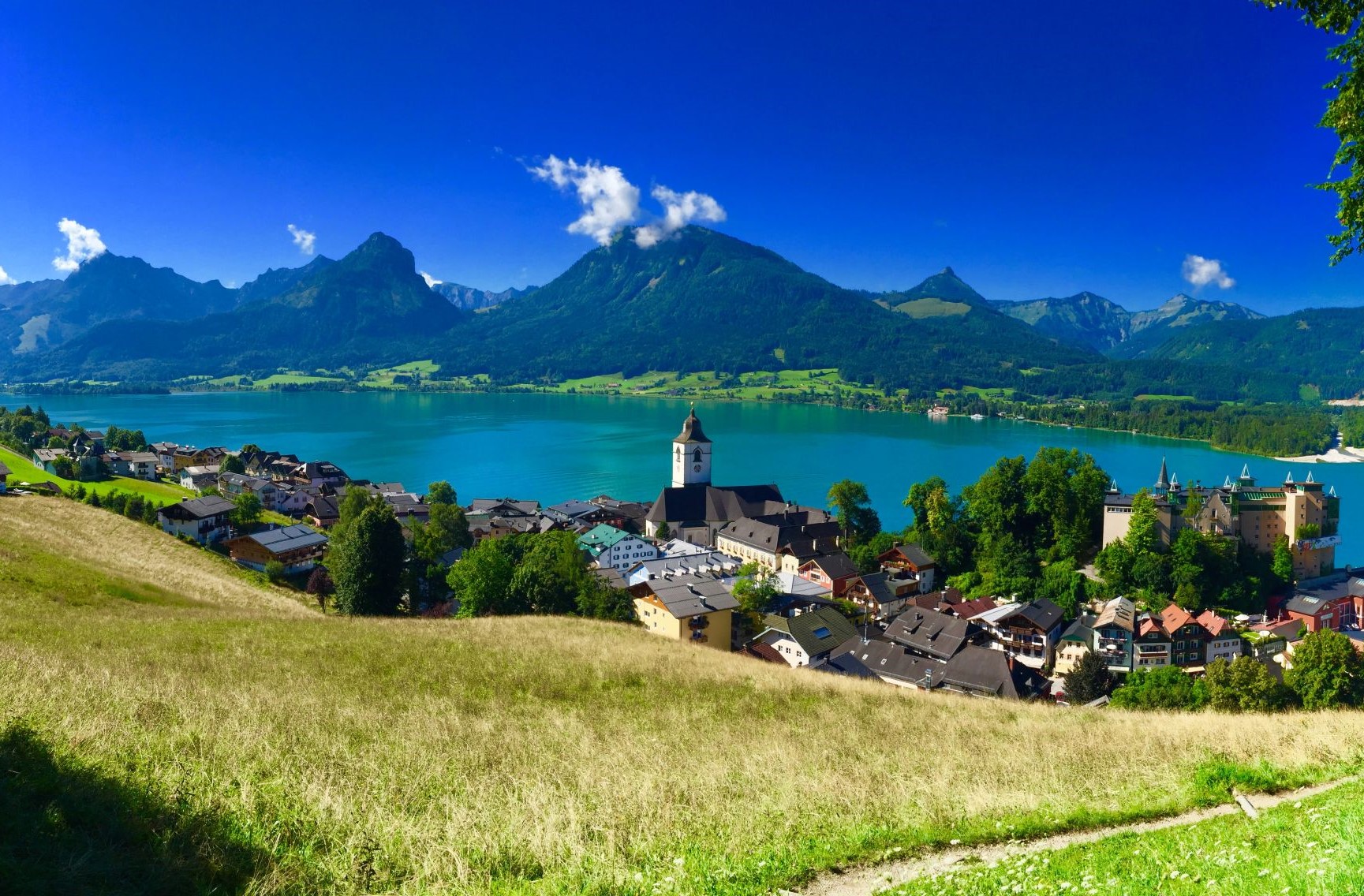 St. Wolfgang Lake. Photo / Supplied
St. Wolfgang Lake. Photo / Supplied
Another stirring tour, deftly navigated by our Trafalgar coach driver Blajee, zipped us up Germany’s highest mountain road, the Eagle’s Nest Road, which tops out at 1847m above sea level. Just across the border from Salzburg in the Bavarian Alps, the road from Obersalzberg to the Eagle’s Nest is considered a feat of engineering, blasted out of solid rock in only 13 months' time. In the 1930s, after becoming the German chancellor, Adolf Hitler was looking for the perfect spot to establish an official mountain retreat – a Camp David for his regime.
He chose Obersalzberg, which is a dramatically scenic mountainside area, just uphill from the resort town of Berchtesgaden. Obersalzberg became home to an enormous compound of 80 buildings —fenced off from the public after 1936 and connected by massive bunkers— where the major decisions leading up to World War II were hatched. Much of it was bombed by the Royal Air Force in 1945, but the bombers missed hitting the Eagle’s Nest chalet.
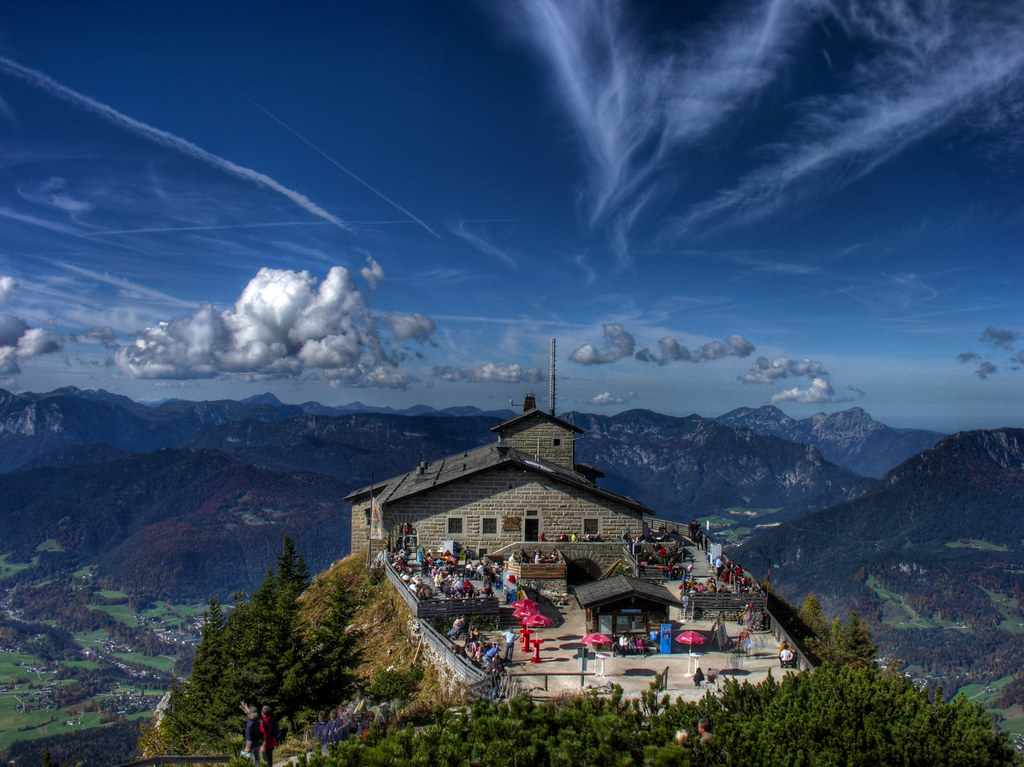 Eagle's Nest in Obersalzburg. Photo / Supplied
Eagle's Nest in Obersalzburg. Photo / Supplied
Eagle’s Nest was a 50th birthday present to Adolf Hitler from his inner circle. Perched alone amid spectacular alpine scenery, the lodge looms like a Bond villain's lair. An ornate brass elevator was built to whisk Hitler and his guests up the last 120 metres to the lodge, from the end of the mountain road. This building, which is now a summer restaurant, is one of the few undamaged monuments of the Hitler era. Today however it still offers a magnificent and unique view of the surrounding countryside, but also an opportunity to reflect on the abject horrors of its previous owner.
Tour Differently. Travelling with Trafalgar means you won’t just see the world – but you’ll experience it with authenticity at the forefront. Tour adventurously, from the must-sees to hidden secrets, and tour locally with those priceless encounters with the locals. Trafalgar’s 10 day Imperial Europe tour has a starting price of $4,422 per person, twin share and includes a savings of up to $600 per person. Valid on select travel dates June, July and August 2025. Subject to availability. Call 0800 484 333, visit trafalgar.com or see your local Travel Agent.
Cathay Pacific is spreading its wings in Europe, launching direct flights to Munich in June and Brussels in August, which will increase its reach into Europe by flying to 11 destinations. Cathay Pacific’s Munich flights will be operated by advanced A350-900s, as they do between Auckland and Hong Kong. The aircraft offer fully flat beds in Business, spacious seats in Premium Economy and comfort in Economy. The cabin air quality is decidedly better on A350s, and you’ll notice how much quieter these big birds are. The seatback entertainment system kept me suitably engaged with a head swirl of premium movie and TV selections, live news channels - all in vivid 4K, plus in-flight WiFi is available. cathaypacific.com
Mike Yardley is our resident traveller and can be heard every Saturday with Jack Tame on Newstalk ZB.
Take your Radio, Podcasts and Music with you









